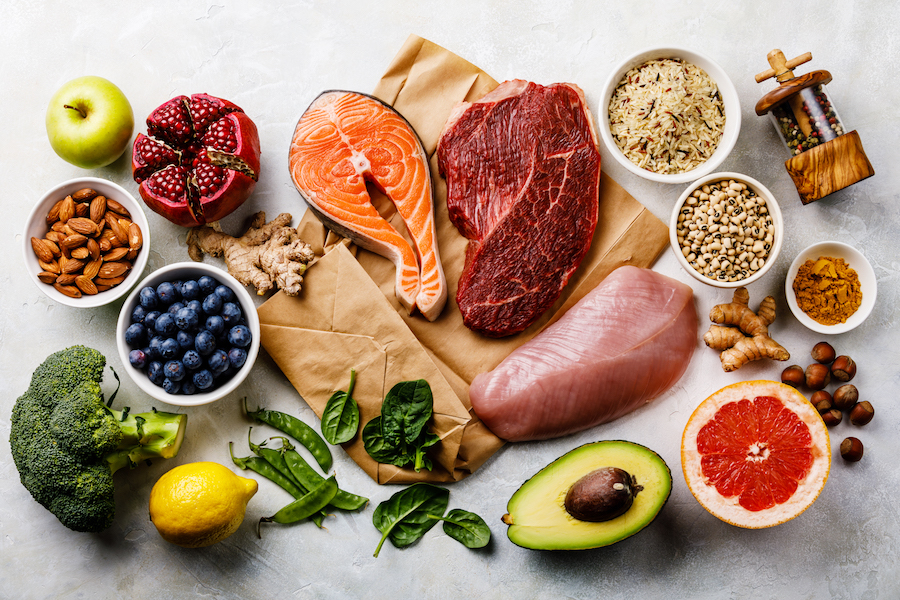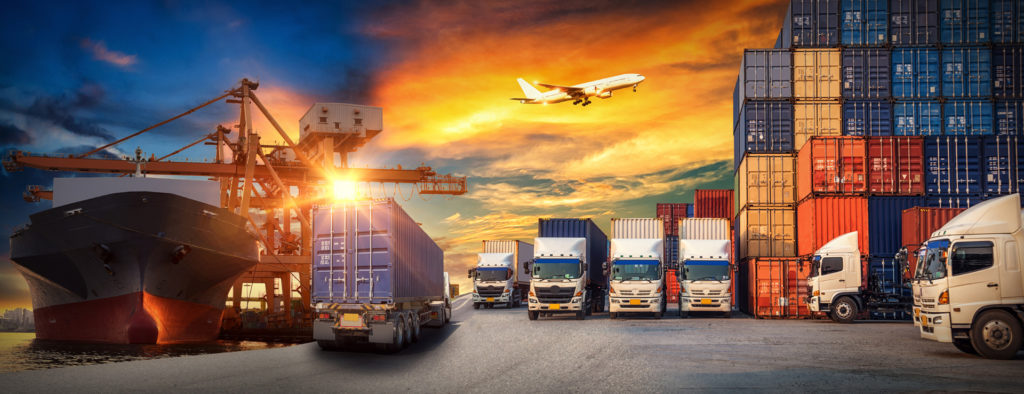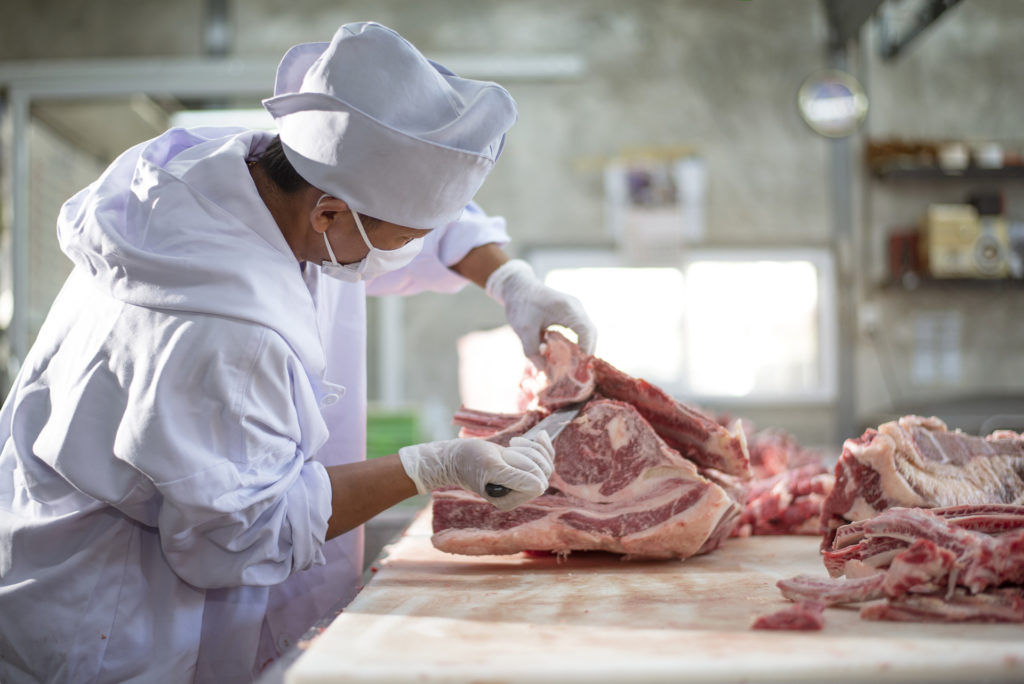Lessons from COVID-19: New appreciation for labor, transportation
Stocked shelves and a ‘new normal’ in food supplies
The food supply chain is still working to improve from the upheaval caused by COVID-19, but recovery and a new normal are getting closer and closer.
“While there is still a ways to go before the food distribution system is back online and we have fully stocked shelves, we are getting there,” said Greg Pompelli, Ph.D., director of the Texas A&M AgriLife-led Center of Excellence for Cross-Border Threat Screening and Supply Chain Defense Center, or CBTS, a Department of Homeland Security Science and Technology Center of Excellence.
Stocked shelves may be thanks to good production, processing and distribution systems, as in the case of Texas, where many of the products are grown, Pompelli said. Or bare shelves may be related to continuing transportation and labor issues that result in a difference in stocking – we simply don’t see products we expect to see or as much of them.
Heather Manley, Ph.D., CBTS executive director, said at the start of this pandemic we didn’t know how bad it would be. We didn’t know how the food supply would be affected and how workers would be affected.
The processing portion of the supply chain had to retool somewhat to move from the commercial to consumer markets – instead of mega rolls of toilet paper made from recycled fiber aimed at the commercial outlets, they had to move to single rolls made from softer virgin fiber for home use. Similar issues were found in the food supply in shifting from commercial to consumer use with respect to suppliers, packaging, distribution and stores.
“You just don’t buy produce or meat in the same manner for home as you would for more industrial use,” she said.
“But America basically feeds the world; we export a lot of different food supplies,” Manley said. “As long as you don’t have your heart set on specific brands and products, most people will still be able to get access to nutritious foods.”
An exception, she said, is for the food-insecure population. This pandemic has definitely made the situation worse for them as food banks and other outlets struggle with volunteers and distribution as the number of people needing their services grows.
Pompelli predicted five years from now, as a new generation comes along, they won’t have the perspective of “before” COVID-19 because things will have moved on and their normal food purchasing situation will be different. It might be, in part, comparable to the way flying changed post 9/11.
Human behavior plays a role
Pompelli said many industry analysts and academic researchers are trying to look throughout the food supply system and determine which issues need to be addressed and those that arose as a result of human behavior.
The pandemic and efforts to control it created many challenges for companies and producers who needed to move their products out of food service and into retail channels. Retailers worked to handle increased demand while striving to protect their workforce. Consumers also adjusted as they increased their purchases for at-home consumption, reduced food consumption at restaurants and schools, stockpiled staples, and worried about their ability to pay for essentials like food and housing.”
“We had a lot of commerce that basically came to a halt – with many stores closed people weren’t buying clothes and even when stores were open, they put off many other purchases,” Pompelli said. “Those goods didn’t move; and piled up throughout the system. On the other hand, similar to snow- storm behaviors, instead of buying one can of something or a single package of paper towels, consumers were buying two or more for fear of not being able to buy those goods the next time.”

This behavior led to bare shelves even when production was not affected and reinforced consumer concerns and hoarding, he said.
Pompelli said consumer purchasing is also shifting toward e-commerce on a number of goods such as paper towels or other dry goods. The pandemic introduced many to online grocery shopping. This may be one of those shifts that could become mainstream, and that will bring about more changes in our supply chains. Speed, dependability and cost are key factors that will determine the long-term impact of e-commerce on our supply chains.
The market for perishable goods will continue to be a challenge as these foods often require cold chains to protect and preserve these goods from harvest to purchase, he said. E-commerce advances in this area will require technological innovations that ensure food safety and recognize that consumers generally like to select these products based on side-by-side comparisons. Until that happens, consumers are going to find their way back into the grocery stores.
With produce in particular, he said studies are showing consumer behavior was similar to that of the past. Produce is basically broken down into three categories – fresh, shelf stable and frozen. During most of the pandemic, the percentages of those remained constant. Producers were able to shift from supplying the food service industry into the retail market. And hopefully they will be able to shift back when food service volumes return.
The pandemic demonstrated that least-cost production did not necessarily translate into flexibility or resilience, especially when disruptions were magnified by the scale of their operations, Pompelli said. Processors who under normal conditions reliably produced large volumes of selected products at low costs found these efficient systems limited their ability to respond to disruptions.
He said the extent to which these experiences lead to increased opportunities for smaller or local processors food systems depends on advances in robotics and automation, and consumer sensitivity to possibly higher prices.
Transportation and distribution
Pompelli said one thing they are seeing as analysts study the effects of the pandemic is the impact caused by the disruptions in the transportation system.
The extended supply chains relies on highly choreographed movements of goods to feed “just-in-time” inventory practices, he said. During the pandemic, those movements were disrupted. Where disruptions mounted, input supply problems cascaded. Delays in one part of the supply chain could be felt across the system and often led to further disruptions and delays.
For example, when malls and businesses closed to mitigate the spread of the disease, the shipments destined for those stores remained stacked in ports, which added to port congestion, further slowing the movement of goods and reductions in production elsewhere forced shippers to postpone the movement of goods. Overnight, the characteristics of an efficient system became the source of risk for those relying on that supply chain.
Pompelli said issues still remain in the world market with troubles faced by shipping companies. Initially it was they didn’t have enough product to move. Now seafarers, the people who work the ships, feel like they are being a bit abused, as many ports are refusing to accept people not from their country.
“These seafarers fulfill their contracts, but when they get to a port the fears about the disease prohibit refreshing the crews. When this happens seafarers can’t get off the ships on which they worked to go home, and new crews cannot board. These seemingly simple-to-resolve issues represent hurdles to the efficient operation of the system.”
He said the situation is certainly better than it was at the worst of the pandemic, but it is not resolved yet.
At a local level, grocery stores rely on trucks to deliver the goods that stock their shelves, he said. But the pandemic saw limits in terms of number of truck drivers willing to go greater distances. In addition, stores rely on local staff to unload trucks.
“If staff are fatigued or unavailable to help unload, then the truck is stuck at that location longer than anticipated,” Pompelli said. “Safety regulations limit the number of hours a truck driver can work during a given period. While some rules were eased, these apparently simple problems added to supply chain disruptions.”
The high value of a healthy labor force
Pompelli said meat supply disruptions were not because the animals weren’t available to provide the supply, they were caused by health-related plant closures at some of the country’s largest meat packers. The worst of these issues appear to be behind us, but recovery for some producers may be difficult.
“This pandemic has highlighted the value of labor and that we need to do a good job of taking care of it,” he said.
The produce industry, which relies heavily on transient labor that typically moves by bus from one harvest location to another, is a good example.
Pompelli said early in the pandemic, packers realized that while cost effective, crowded buses, harvesting equipment and packinghouses increased the likelihood of disease spread and the potential for delayed harvest of perishable products. As a result, many in the industry developed ways to get around crowding concerns, which provided more protection from the spread of the disease and enabled them to keep operating.
“Those companies that have done that better have fared better,” he said. “They’ve been able to produce. Also, as word gets out that these companies are doing a good job of protecting their workers, consumers notice because they are protecting them also. I think we are seeing the appreciation of labor and its importance to the consumer is growing. It doesn’t make production cheaper, so we can expect that some of our food costs might be going up.”
Pompelli said the pandemic has added to the difficulties existing and newly food-insecure families are experiencing as job losses mount and the food banks and systems designed to mitigate hunger are being tested by huge increases in demand and fewer volunteers to help move that food. For the food insecure, that could continue to be a problem as the system continues to work to recover.





